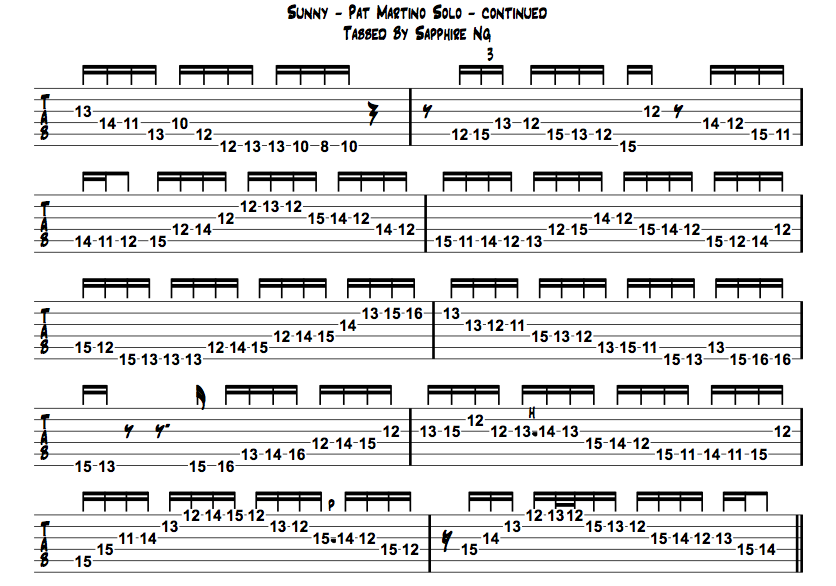9 Simple Techniques For Pat Martino jazz guitar lick - Sunny solo transcription (4 bars)

PAT MARTINO - CISCO (+TABS!) - Patreon Can Be Fun For Everyone
From there, you'll see a Bb passing tone in the 2nd beat of the Am7 bar, which is placed into the Dorian mode utilized to outline that chord in the line. You'll likewise see the G melodic minor scale utilized to lay out the Gm7 chord, with the F# note highlighting that scale option.

Free Jazz Guitar Transcriptions: Impressions by Pat Martino
This pattern is not only discovered in Martino's playing however is likewise a favorite of John Coltrane, heard most notoriously in his solo on the jazz traditional Giant Steps. Sunny Lick 2 [starts at 2:56 in the video] Apart from the bebop influence at the end of this Pat Martino lick, you'll see a duplicated melodic expression repeated throughout the first five and a half bars of the line.
Practice taking this melodic pattern, heard in the second half of the Am7 bar at the start of the line, and repeat it when soloing in your practice regimen. From there, create your own melodic expression to repeat in your solos. The key is to use the repeated expression to build energy, but understand when to proceed in your lines so that the lick does not end up being exaggerated.

Pat Martino: The Early Years: Guitar Solos Book: Pat Martino
Our Pat Martino Obituary (2021) - Holliston, MA - Legacy.com Diaries

Bright Lick 3 [starts at 4:23 in the video] Apart from studying single-notes when digging into Martino's soloing concepts, you'll likewise wish to go into his usage of double-stops and chords in his soloing phrases. Pat Martino tabs can see 2 and three-note shapes being utilized in this line to create energy throughout the expression.

Pat Martino: Quantum Guitar Complete: Guitar DVD: Pat Martino
When dealing with double stops on your own, you can take them from arpeggios, small pentatonic scales, or modes in your solos. Bright Lick 4 [starts at 4:51 in the video] Here's another repeated Pat Martino lick, though this time the line is not based on arpeggios or pentatonic scales, as you saw in the first 2 repeated lines in this lesson.
Sunny Lick 5 [starts at 5:21 in the video] In this lick, you'll deal with a mix of arpeggios and scale notes as you outline the changes over the tune Sunny. You'll observe diatonic arpeggios being utilized in the following ways: F# m7b5 over Am7Gm7 over Gm7Edim Triad over c7Fmaj7 over Fmaj7As you can see, there are some arpeggios that detail the direct chord that Pat's soloing over, while others are subs that originate from the related key center.
